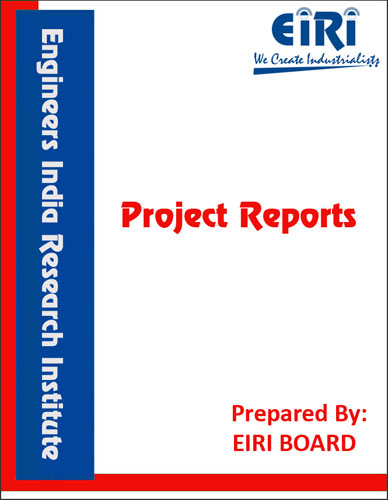KRAFT PAPER FROM WASTE PAPER (100 TPD)
The project report includes Present Market Position and Expected Future Demand, Market Size, Statistics, Trends, SWOT Analysis and Forecasts. Report provides a comprehensive analysis from industry covering detailed reporting and evaluates the position of the industry by providing insights to the SWOT analysis of the industry.
We can prepare PROJECT REPORT as per your INVESTMENT PLAN for BANK LOAN REQUIREMENT and INDUSTRY ANALYSIS. All reports are prepared by highly qualified consultants and verified by a panel of experts.
Have Query? Click Here to Chat
Industry Expert is Online, Chat with him for more detail.

Paper form a commodity of prime importance to day from the parts of view of mass communication, education, and industrial and economic growth. The art of paper making was first discovered in China in and around 2nd century. B.C. pan where it travelled slowly west ward and reached the prantiens of Europe. By the end of 14th century, a member of paper mill existed in Europe, particularly in Spain, Italy, France and Germany. the invention of printing in 1956 brought a vastly in creased demand for paper, and paper-manufacturing was introduced to England. America followed in 1690.
Agricultural residues, such as bagasse, rice husk, wheat husk jute sticks, grasses, etc are fast becoming popular materials for paper making. considerable attention is being given to the utilization of various agricultural by products for preparing pulp for paper manufacture landable efforts are being make in this direction.
Paper production requires a disintegration of the bulky fibrous material to individual or small agglomerate fibres.
This is called pulping. The ideal fibre for high grade paper should be long, high in cellulose content and low in ligrin content. Most ideal raw material for paper products is bamboo. Other sources are bagasse and hardwoods like jute stick must be developed and good quality paper pulp make by blending with bamboo fibre.
INTRODUCTION
USES AND APPLICATION
B. I. S. SPECIFICATION
B.I.S. SPECIFICATION FOR KRAFT PAPER
MARKET SURVEY
GLOBAL MARKET POSITION OF KRAFT PAPER
OVERVIEW OF PAPER MARKET IN AFRICA
INSTALLED CAPACITY OF PULP,PAPER AND PAPER BOARD IN AFRICA
GLOBAL INSTALLED CAPACITY OF PULP, PAPER AND PAPER BOARD
PRODUCTION OF KRAFT PAPER IN AFRICA
IMPORT AND EXPORT OF KRAFT PAPER IN AFRICA
APPARENT CONSUMPTION OF KRAFT IN AFRICA
ESTIMATED DEMAND OF KRAFT PAPER IN AFRICA
DEMAND SUPPLY GAP OF KRAFT PAPER IN AFRICA
GLOBAL PACKAGING MARKET POSITION
PRESENT MANUFACTURERS/SUPPLIERS
MANUFACTURING PROCESS OF KRAFT PAPER
PROCESS FLOW DIAGRAM FOR MANUFACTURE OF KRAFT PAPER FROM WASTE PAPER
FLOW SHEET OF MANUFACTURE OF PAPER
FORMING OF WET WEB, PRESSING THE WET SHEET
AND DRYING THE SHEET
METHOD OF PREPARATION OF DIFFERENT TYPES OF PULPS
PLANT LAYOUT
POLLUTION CONTROL IN PULP AND PAPER INDUSTRIES(IN DETAIL)
COMMON PULPING PROCESSES
CHEMICAL CHARACTERISTIC OF EFFLUENT FROM A LARGE SULPHATE
(KRAFT) PULP AND PAPER MILL USING CHEMICAL RECOVERY
POLLUTION CONTROL FOR LIQUID EFFLUENTS
COMPLETE MACHINERY MANUFACTURERS/ SUPPLIERS FOR PAPER PLANT
SUPPLIERS OF RAW MATERIALS
PLANT AND MACHINERY SPECIFICATIONS FOR KRAFT PAPER FROM WASTE PAPER LIST OF PLANT & MACHINERY WITH COST
WASTE TREAD STREET
LIQUOR AND CHEMICAL PREPARATION SECTION
STOCK PREPARATION AND APPROACH FLOW SYSTEM
APPENDIX – A :
1. COST OF PLANT ECONOMICS
2. LAND & BUILDING
3. PLANT AND MACHINERY
4. FIXED CAPITAL INVESTMENT
5. RAW MATERIAL
6. SALARY AND WAGES
7. UTILITIES AND OVERHEADS
8. TOTAL WORKING CAPITAL
9. COST OF PRODUCTION
10. PROFITABILITY ANALYSIS
11. BREAK EVEN POINT
12. RESOURCES OF FINANCE
13. INTEREST CHART
14. DEPRECIATION CHART
15. CASH FLOW STATEMENT
16. PROJECTED BALANCE SHEET



